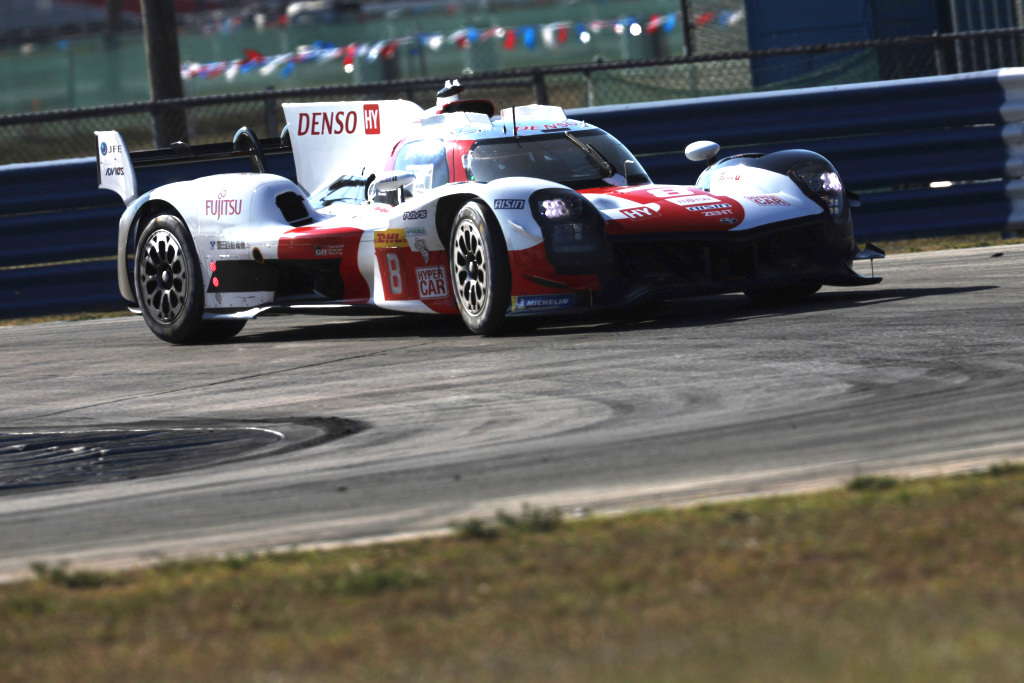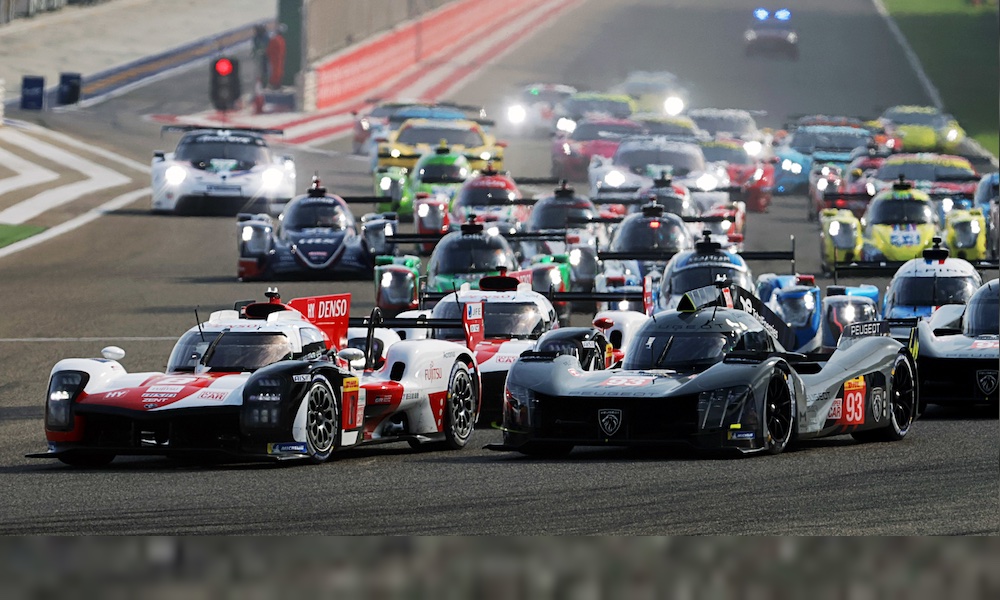Confidence is high at Toyota Gazoo Racing ahead of the 1000 Miles of Sebring. While much of the competition in Hypercar have been busy getting up to speed with new machinery over the off-season and throughout the past week in Florida, Toyota has been working on perfecting the proven package that is the GR010 HYBRID.
Throughout practice and qualifying at Sebring the GR010 HYBRID has looked like the car to beat, despite AF Corse’s No. 50 499P snatching the headlines, and losing pole position last night came as a surprise to the Japanese-flagged team. Toyota remains the favorite for the race though, and while that may seem unsurprising, to those directly involved, it validates their efforts in recent seasons.
Toyota has been an almost unstoppable force for years now in the FIA WEC, but true, world-class competition hasn’t been there since Porsche departed after 2017. The opportunity has finally arrived for the Cologne-based team to show everyone just how strong its WEC effort really is, after years spent waiting for the cavalry to arrive.
For this season, Toyota decided not to bring a brand-new car to the WEC. Instead, it opted to improve its existing challenger, which has delivered a pair of world championships and Le Mans wins.
 At a glance, the GR010 HYBRID, with its new aero package that features new dive planes, a smaller rear wing end plate and a new set of lights that improve visibility at night, simply looks more aggressive. But the Toyota team’s aim isn’t wasn’t to improve the car’s looks…
At a glance, the GR010 HYBRID, with its new aero package that features new dive planes, a smaller rear wing end plate and a new set of lights that improve visibility at night, simply looks more aggressive. But the Toyota team’s aim isn’t wasn’t to improve the car’s looks…
The new package has improved brake cooling and allows quick changes to cooling options during a race, achieved through new vents at the front and rear. It’s now a lighter car too, its weight down to the minimum 1040kg (2293 lbs) allowed by technical regulations. Principally, Toyota has been working to adapt the car to the ever-evolving regulations, which have been chopped and changed since Toyota began developing the car back when the new Hypercar formula was first revealed.
With plenty of mileage completed with the new-look GR010 the drivers are all up to speed and comfortable with the new package. The feedback has been positive.
“We’ve worked on the weak areas, they were not easy to overcome. With the rule changes since our initial design, we’ve had to work to get the car into a better window. We’ve done a decent job, and come with a more driveable car,” No. 7 driver Mike Conway told RACER.
 Behind the wheel, Conway says he feels the new GR010 is more nimble, making it easier to navigate the LMP2 and GTE traffic.
Behind the wheel, Conway says he feels the new GR010 is more nimble, making it easier to navigate the LMP2 and GTE traffic.
“You can definitely see the difference in lap time — we are quicker and it’s easier to drive. We were lacking last year to the Alpine. The car is now more responsive and agile; you can place it easier. The traffic is different too this year because we have new competition, so we have to look at where they are strong and weak too.”
Ryo Hirakawa, who drives the No. 8, echoes this, explaining that the improvements made to the car are particularly noticeable on an aggressive track like Sebring.
“Compared to last year, there is a big difference,” he explained. “It’s just an easier car to manage as a driver. Under braking and over the bumps here it’s far easier to handle, last year it moved around a lot more at Sebring.”
The Hypercar class has a new look though — it’s bigger and deeper, with fierce competition expected from Ferrari, Cadillac and Porsche’s new programs and hopefully, the returning Peugeot effort, which for the moment is lagging behind.
Ahead of what has the potential to be the most competitive top-class title battle in WEC history, Conway says the team is energised by the new arrivals in Hypercar.
“When we first exited the pit lane on Day 1 of the Prologue I was like, ‘Wow, 2023 really has started.’ This is what we’ve wanted for so long, and it’s finally here. There are so many unknowns — we will have to take more risks and push harder in traffic, I’m excited.”
Toyota is ready to get down to business. It’s going to be fascinating to see if the new competition can challenge the champions from the start. If qualifying is anything to go by, then we could be in for a titanic battle for the win.

